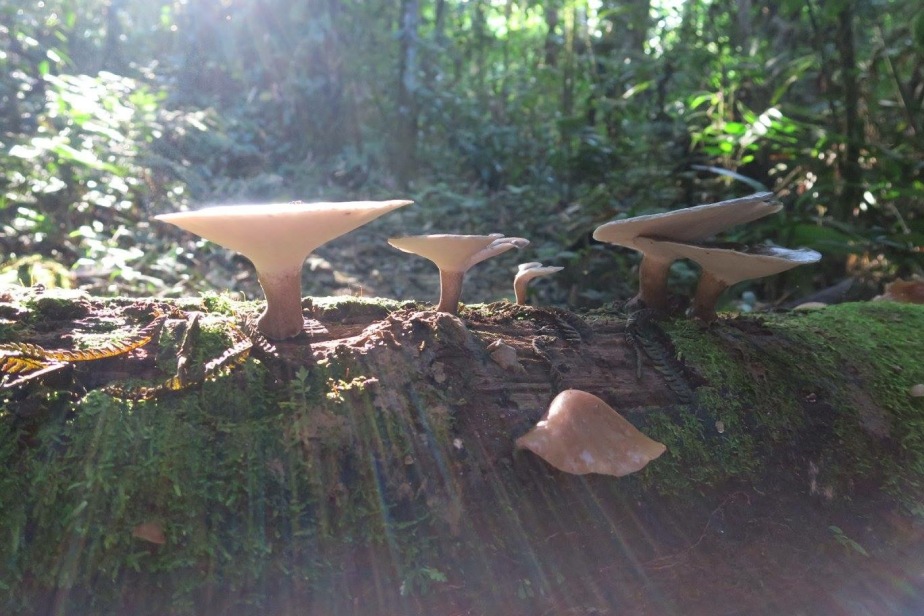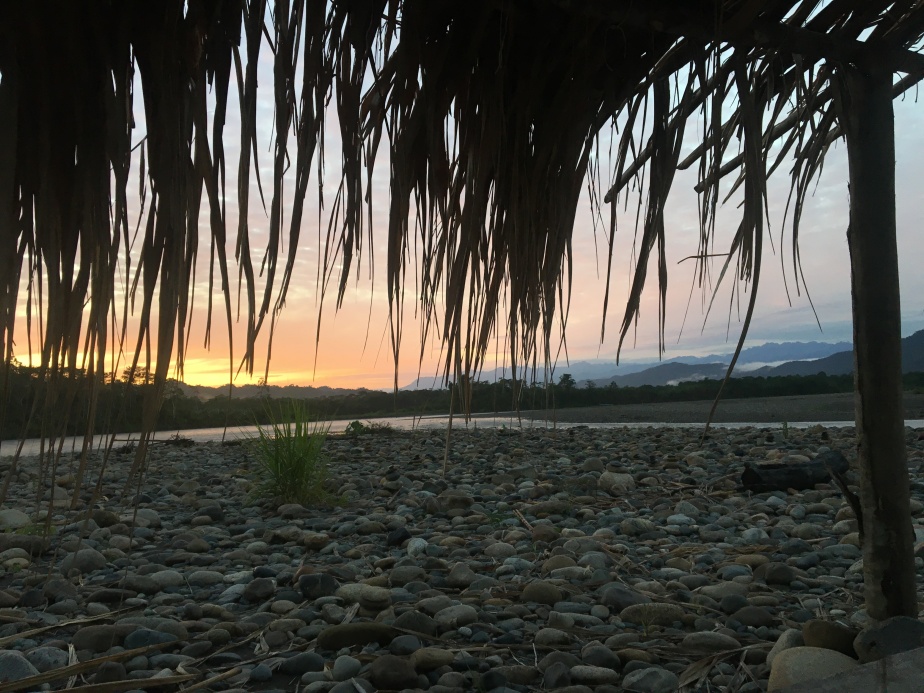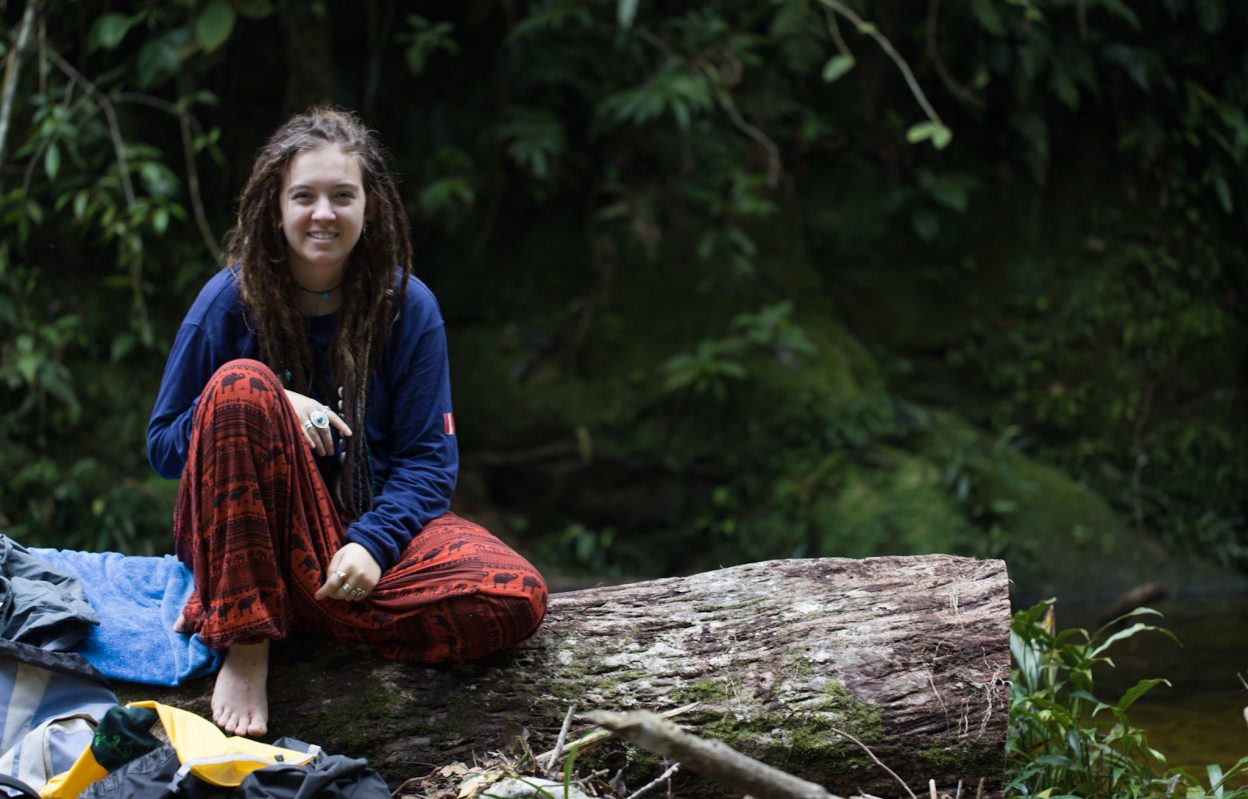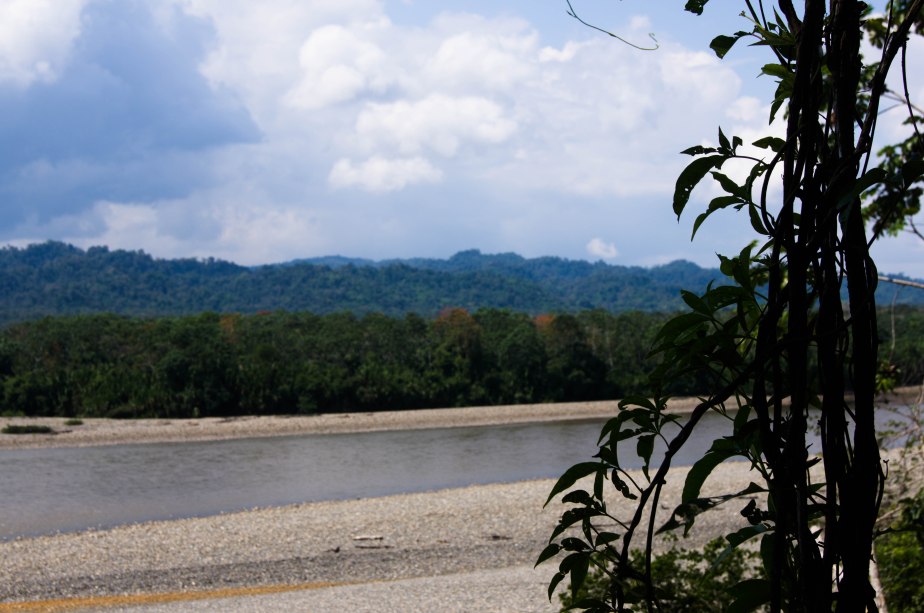This is an essay I wrote while in the jungle, it focus is on how the land at the MLC has been used and the impacts those uses have had. So I thought I’d share this with you.
The Manu Biosphere reserve in southeastern Peru is a UNESCO world heritage site protecting 1,881,200 hectares of species rich landscape. It is unique as it has all three highly distinct ecosystems in such close proximity; Puna, an area of high altitude; lowland forest area, defined by areas of lakes and Ichu grassland; and cloud forest, an area covered in constant mist (Wilson, D. & Sandoval, A. (1996) Manu). The journey down through the cloud forest and along the Alto de Madre de Dios river is a breath taking journey of 3500 miles, up along the winding paths to the entrance of the Manu National Reserve and then down through the cloud forest to the lowland tropical rainforest at its heart.
Lowland tropical forest’s defining features are a tall canopy of emergent trees towering over it and a dark humid interior. When these tall tree fragments, the forest canopy and other vegetation that surrounds them are removed the forest interior opens up allowing regeneration of plants by creating gaps for pioneer species to fill. The varied land ownership and land use history of Manu Learning Center (MLC) within the Manu Reserve has created an area of land with unique characteristics. Once pristine rainforest, MLC is now regenerating secondary rainforest, containing three distinct forest types. Each type of ownership and land use has brought challenges to flora, fauna and communities who live within it. What remains is a disrupted tropical forest that has a myriad of trails, skid trails and compacted soil on which heavy machinery has been used. The MLC is therefore unique as it is an area of forest, which has been left to regenerate and hopefully regain biodiversity that will not be set back by more logging or other destructive methods. This type of habitat is important as species are linked across several trophic levels. The interactions found between species are vital for the survival of the forest, without these relationships this tropical forest would be completely different1.
Understanding a little of the characteristics of disturbance histories, the changing land ownership and its resulting impact, and the relationship between species at different trophic levels, will allow greater appreciation of these challenges and help develop solutions that benefit all. I will first describe the characteristics of the three disturbance histories at the MLC.
Completely cleared and now regenerating (CCR) is the first section of rainforest you enter as you walk into the jungle from the MLC. This rainforest was cut down and used for agriculture, the land, which is now regenerating has two key features that make it stand out from the other habitats. The first being the canopy; CCR being completely cleared over several years using slash and burn as the primary force behind the deforestation. This has allowed for pioneer species to establish, due to the increased amount of light reaching the forest floor. The lack of canopy allows light to penetrate to the leaf litter, creating high enough light levels for pioneer species such as Cecropia, Melastomataceae and other pioneer species to grow and become dominant. With no need to compete for light the lack of nutrients in the soil has does not prevent these plants establishing. This results in an area that is denser but less structured. There are less big tall trees, but more leafy plants dominating the lower levels of the canopy, making it harder to separate individual plants.
The second feature of this landscape is that its flatter, this allows people to access the area with ease compared to other parts of the reserve. Easier access has meant that loggers can go into this area and cut trees down faster, it doesn’t take time to get equipment into the area and then removing the logs is also a lot easier and more efficiently achieved and more profitable. CCR is also a lot closer to rivers and streams, this again allows better access to the area, increasing the ease of removal of trees or other crops that were planted in this forest type, such as cocoa and sugar cane.
Partially cleared and now regenerating rainforest (PCR) is the second area of rainforest. This is an area that has a decreased density creating a dark area of land that is filled with species that are competing for light. Compared to CCR the canopy is less open, meaning that pioneer species are less abundant as light levels are less intense as it doesn’t reach the forest floor where these species would grow. PCR has some similar features to both CCR and SLR. It is similar to CCR in that it has less big trees due to logging but like SLR its terrain has areas that undulate and sections that are steep, creating a harder terrain to access.
Decreased light levels allows plants such as climber plants (lianas) to dominate the area. Lianas start life as shrubs that are rooted in the ground and becoming vines later on in their life. Tendrils entwine themselves in branches of trees in close proximity, winding around the trees moving towards the light at the top of the canopy. Lianas are a heavy load to other plants causing their host tree to fall in strong winds and create gaps in the canopy for pioneer species and lianas to dominate. Epiphytes are also common in this part of the forest, these plants grow on the side of trees; this relationship is a form of commensalism, one benefits from the relationship. While the epiphytes has space to grow and develop, with access to sunlight, the host tree doesn’t benefit, as the increased weight of the epiphyte can cause branches of the tree to break. Epiphytes are interesting because their root system is along the surface of the host tree, allowing them to capture nutrients from the air, bits of dust and soil. The accumulation of these particles will eventually lead to a developed root system. The debris collected creates its own individual section of soil (Pearson, D. & Beletskye, L. (2005) Peru.).
Selectively logged and now regenerating rainforest (SLR) is the final type of disturbance; this area of land is the least disturbed area within the MLC. The most defining feature of this land is the landscape. The terrain here is very steep and undulates constantly, making it hard for trucks to access or river access. This area is the least dense out of the three habitat types, purely because the canopy is most intact here, lessening the light that hits the forest floor, which in turn stops pioneer species from establishing. This area is most recognizable from the vast quantity of large trees that are found in this area.
A brief look at the changing land ownership and use helps us understand how these distinct forest types were created. The period from 1953-1983 was characterized by forest clearance and crop production. In 1953 on a piece of land close to the Masacotania Creek a ranch or Hacienda was built. First the area was cleared by slash and burn or shifting cultivation. Shifting cultivation is a process used by subsistence farmers who move around the forest grazing their cattle and growing crops. This method of forest clearing causes a change in the composition of the soil making it less productive and depletes the nutrients within the soil. As trees are cut down the rapid nutrient cycle of tropical forests is disturbed, as leaf litter is not replenished while nutrient rich crops are grown. Typically the cleared land is used for a couple of years removing nutrients by leaching before the farmers are forced to move onto the next patch of pristine forest by infertile soil. With this technique when the canopy is cut down there is a higher opportunity for rain to penetrate the soil, which would be protected by the canopy. However when the canopy is removed, the soil is more vulnerable. It makes it harder for plants and new growth to form. In this case the land around the ranch was used primarily to grow orange, mandarin and lemons. The owners then planted 200 hectares from Mascoitania to Algodonchayoc Creeks with cocoa, which was grown for sale. This crop was grown for four to five years until the crop suffered a fungus outbreak, destroying the crop completely and resulting in the owners moving to another site. From 1957 – 1965 land use varied, from cocoa, to sugar cane plantations as well as cattle ranching from 1964 to 1965. Throughout this time the described land use was continuously damaging the soil: plants don’t add nutrients back, so the soil never returns to its original state.
The second period from 1983 until 2001 is characterized by timber extraction. When, in 1983, Mr. Zambrano purchased the ranch the land was so infertile that further crop production was impossible. Therefore, under his ownership the land use changed from shifting cultivation to timber extraction and logging. Tornillo o aguano (Cedrilinga), Cedro, and Mashonaste, were extracted mainly from Mascoitania and Lucomya Creek, where the landscape is less steep and allows easier access for the trucks and boats needed to remove logged wood. Systematic logging continued until 1992 when Mr. Zambrano left. Although logging of this area continued after 1992 at a lesser intensity much valuable timber was extracted. The tracks that had been cut between 1983 and 1992 allowed easy access for loggers who targeted larger trees.
In 2001 the land was sold to Mr. Quinn Meyer who established a private reserve the Manu Learning Centre (MLC). From 2003 to the present, conservation work has been continuous here. This area is now classed as regenerating forest and it is hoped it will regain the biodiversity it once had. In order to determine the level of biodiversity possible in regenerating forest Quinn has allowed the MLC to become a hive of scientific activity where scientists come together to study the biodiversity found here. This research is considered fundamental as more than 400 million hectares of natural forest are now permanent timber estates making their potential to harbor a large diversity of species a possible solution to challenge of maintaining the biodiversity of tropical forests. Regenerating forests could have high conservation value, and retain many functions and services of primary forests. It is argued that regenerating rainforest should be protected now and work to conserve them begun immediately, as in several years, they may be the only forests we have left. Research at Crees focuses on surveys of the generalist and specialist species found around the MLC to help scientists understand how the forest works, roles within the forest and finally the health of the forest.
A generalist species is one that is able to thrive in a wide variety of environmental conditions and can make use of a variety of different resources. An example of such as species at MLC is Oropendolas, which are found in different habitat disturbance zones such as CCR, PCR and even SLR. Oropendolas can find materials for their nests in lots of different areas, not having to have specific types of habitat in which to live. The plant species melastomataceae is a generalist species as it is found in open areas such as trails or temporarily cleared land where the sun can penetrate to lower levels.
A specialist species can thrive only in a narrow range of environmental conditions and wouldn’t be able to survive if these conditions changed. An example is the Peruvian Spider monkey (classed as vulnerable on the IUCN red list). They are specialist because they are large frugivore mammals that live at the top of large trees such as in exist in SLR; deforestation has therefore had an impact on where these species can habituate as there are no longer larger tree species in PCR or CCR. The newly discovered Ameerga sp1 is a specialist species that is only found at the MLC as it has a specific set of requirements which it needs to survive, these being a higher canopy level, amount of leaf litter, large rocks, still water and higher levels of refugia.

Through this research Crees aims to advance understanding of how the rainforest at the MLC works. This work cannot be considered complete however if it ignores the role of humans in the ecosystem. Therefore, Crees also works with the local community in Salvacion, focusing on land use to encourage a move away from logging and towards a more sustainable lifestyle. This is a challenging goal as local people have developed the way they co exist with the forest over generations passing on techniques of land management beliefs about what is right; the conclusion they have drawn from their experience is that logging gives them the best livelihood outcome. So Crees works with the local community in Salvacion to try to give them an alternative vision of what is possible by providing the tools and materials necessary to build bio-gardens on their land. Using bio-gardens as a tool for change helps the local people be self-sufficient and help the local children gain skills learning how to grow food which will be a lasting benefit for them and their future. Crees has a list of beneficiaries that they help become self–sustaining; growing their own food, making a profit by selling surplus production, learning new skills and teaching how to get the most out of the forest and move away from previous uses of the forest, such as logging or hunting. People can become beneficiaries if they have a certain set of requirements: the right amount of land, a minimum amount of time available to work in their bio-garden. This is very important as the materials, time and energy used by Crees could be wasted if the benefactors do not put the same amount of effort in.
Crees also works in the local agroforestry plots to provide skills, education and alternative sources of income than hunting and logging. Crees works with locals to help them plant trees that work with banana trees, which they already have income from. Soft and hardwood trees are planted to provide nutrients to the soil that have been lost because of the affects of monoculture and provide a different growing period meaning trees can be harvested over different periods and give income at various stages in their lifetime as well as their children’s and grandchildren’s.
Any type of land use by humans has consequences for the species that share that land. I have shown how the land that is now the MLC has been used in many different ways over the decades since world war two. In 2016 conservation work by scientists, interns, volunteers and maintenance staff does affect the forest environment. The impacts may be small in each case but all add up, from walking along trails in the forest to maintenance work on the buildings. The question we must now answer is whether the impact of our presence out-weights the benefits of the conservation work being done. I personally think that there are more benefits than there are negatives. Without the work of Crees there is a chance that this rainforest would be logged or used for agriculture, further destroying the habitat and sending more species into extinction. By documenting the services and functions a regenerating rainforest can provide and the level of biodiversity it can support Crees will be able to make the case for conservation of this resource. If at the same time local communities can be shown a sustainable way forward that holds out the chance of lasting growth and prosperity without negative impacts for short term gain, Crees will have demonstrated how sustainable land use solutions to the challenge of conserving regenerating rainforest are possible.




